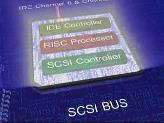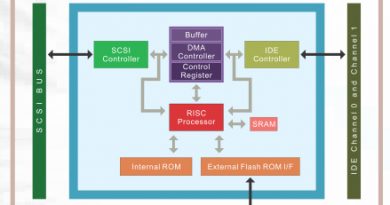How does SCSI Bridge work?
The SCSIDE technology of ACARD is typically applied to SCSI-to-IDE (SATA) bridges. With such a kind of bridge any ATA or ATAPI device of IDE interface will be transformed into that of highly efficient SCSI interface. Through RISC built in the chip for interface transformation, SCSIDE can reduce the consumption of CPU, increase the system efficiency and stability, enhance the I/O performance, make high-end applications more stable, more flexible, and let the prices of related products become reasonable. SCSIDE has been registered as a trademark. Its products support all kinds of IDE devices such as hard drive, CD-ROM, CD-R/RW, DVD-ROM, DVD-RAM, DVD-R/RW, DVD+RW/+R, etc. and are highly compatible with Windows 98/ME/NT/2000/XP, Linux, Unix and Mac.
The invention of SCSIDE is due to that though SCSI devices have the merits of lower CPU loading, multitasking support, high efficiency and reliability, they are costly. However, with a SCSIDE product, any user can achieve the same high efficiency by using an inexpensive IDE device. That is to say, the SCSIDE product like bridge or converter can transform an IDE (SATA) device into an LVD SCSI one. In fact, the price of an IDE device plus a SCSIDE product is cheaper than that of a SCSI device. This is especially obvious in hard drive.
Once your IDE (SATA) device has become a SCSI one, you can fully enjoy the advantages of multitasking and multithreading. That is essential for the handling of a large amount of data in the modern world.
The patented SCSIDE technology
has been adopted worldwide. It will be more popular under the development of multimedia storage
devices.


